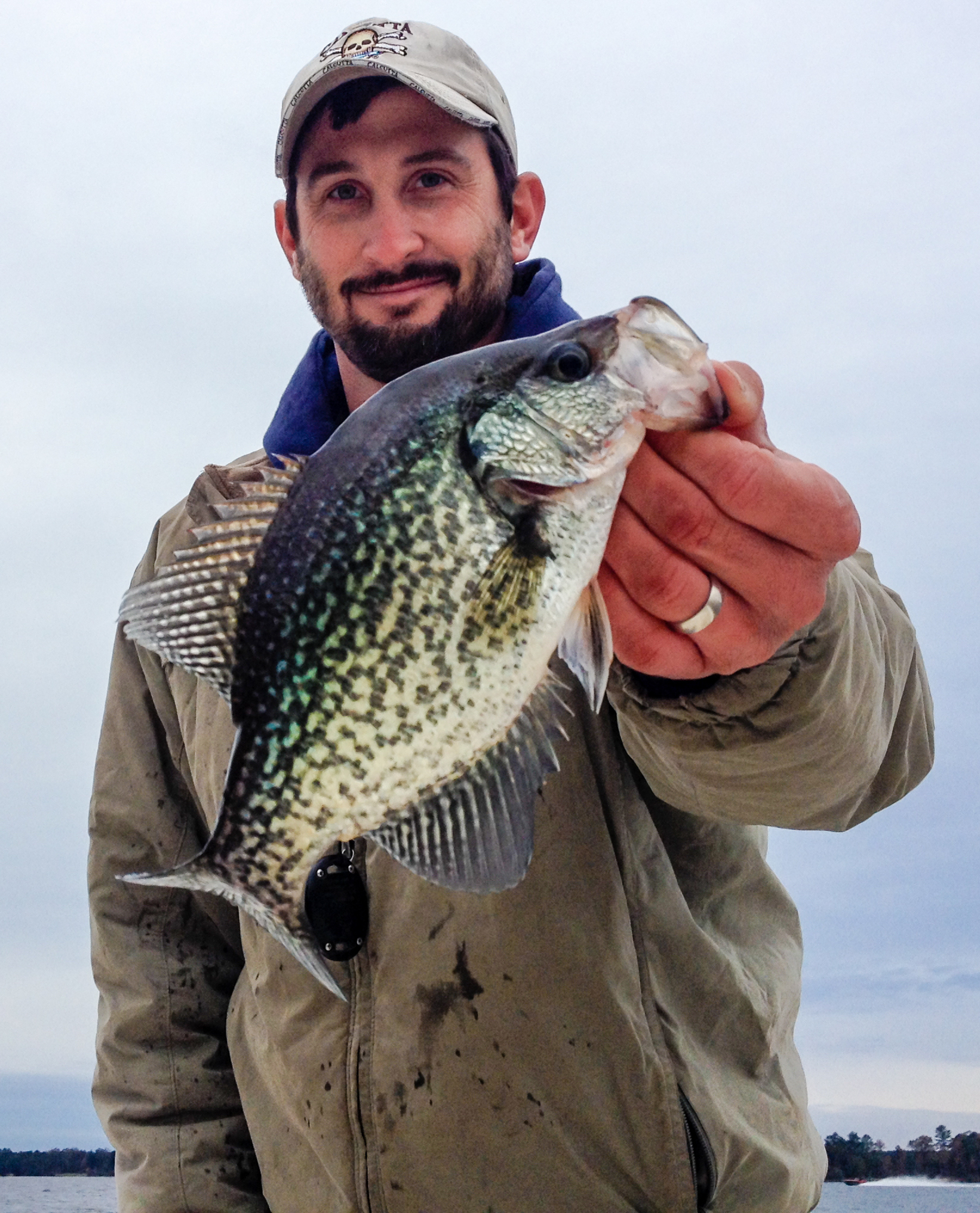
Deep-water bite is hot in cold water
Guide Greg Griffin of Holly Springs, N.C., can count on two things in January: falling water temperatures and a consistent, deep-water bite for slab crappie on Shearon Harris Lake.
According to Griffin, who runs Greggofish Guide Service, when the water temperatures drop into the 40s, both crappie and shad make a move to seek the shelter of depths in the 28- to 35-foot range. This reverses the approach he applies for most the year. Rather than fishing the shallower, sloping points off the western shore of the main lake, he does an about-face and starts with the bluff banks on the eastern side.
“They’ll pile up from the Holleman boat ramp down to where the lake splits between the Little White Oak side and the Buckhorn side,” said Griffin (919-434-4183). “You can catch them almost anywhere in that stretch, because it’s the right water depth, but to have those big-number days, you have to find the biggest mass of fish.”
The sheer faces of the bluff banks fall to depths of 30 foot or more within a few boat lengths of the shoreline, making it the perfect spot for Griffin to start scanning for pods of crappie with his depth finders. But without any significant bottom structure to hold them in place, and enough shad to periodically blackout the sonar screen, Griffin may have to work his way to mid-lake before he finds the marks he’s looking for.
“You catch them really easy and fast when you find the bulk of the school,” he said. “I like to fish minnows on a drop-shot rig, or you can use a Carolina rig. It doesn’t really matter, as long as it’s 1 to 2 feet off the bottom. That’s where I catch them 90 percent of the time. But sometimes they will come up off the bottom. When I start in the morning, I’ll set a couple rods at 2 and 3 feet up until I hit them.”
Griffin ties his drop-shot rigs with 20-pound fluorocarbon, which allows him to easily straighten and retrieve the No. 2, light-wire hook from any obstructions. A ½- to 1-ounce casting sinker is tied to the bottom end with a dropper loop about a foot up for attaching the hook. Then, the rod can be placed in a holder with the weight on the bottom and the proper depth easily held. For the main line, Griffin believes a light braid in the 10-pound class makes a deep-water bite easier to see.
Hovering over a school is until they are caught out is common practice, but if the bite stagnates prematurely, Griffin will inch along with the trolling motor until he’s in the sweet spot.




